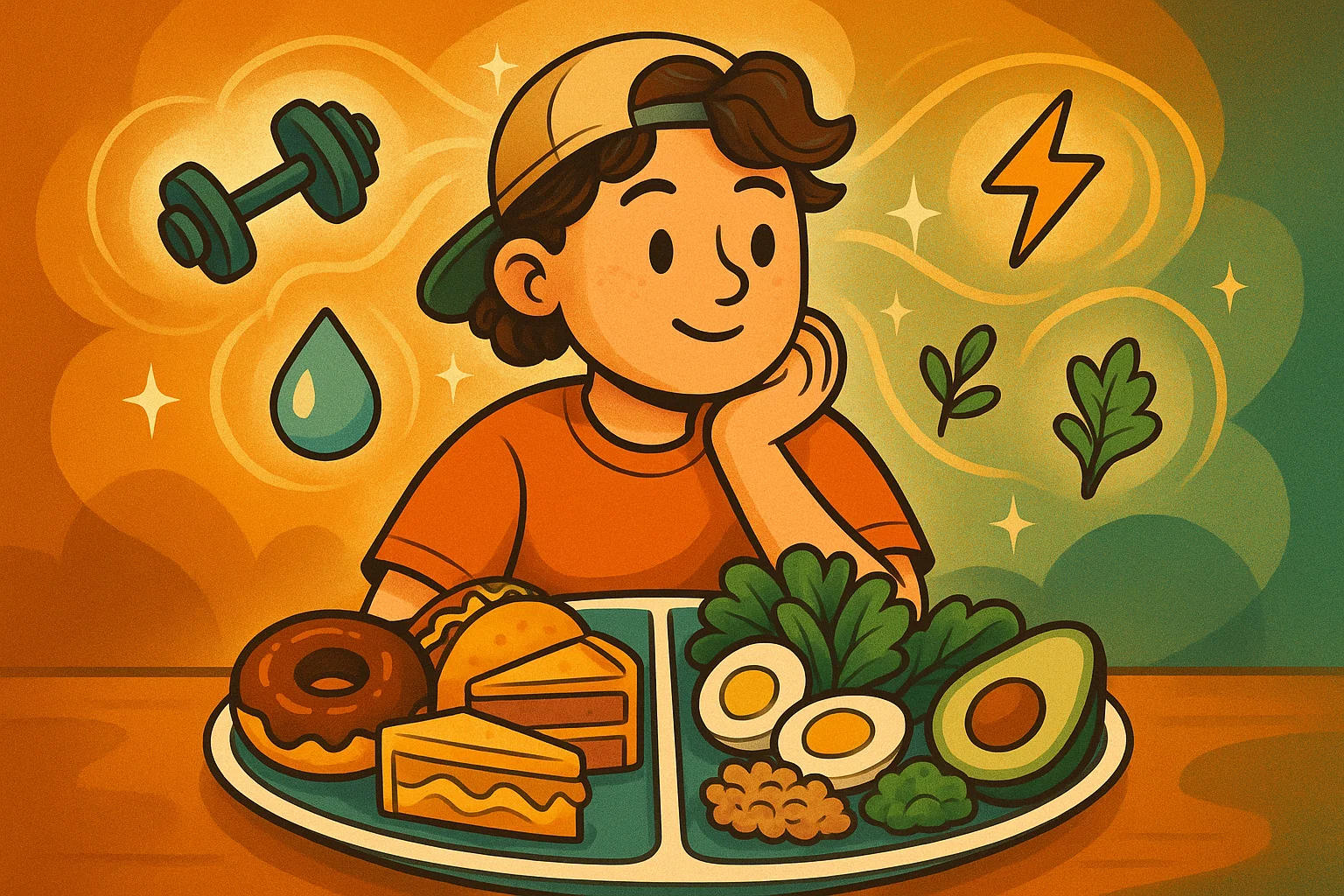Food is more than fuel — it’s comfort, culture, celebration, and health wrapped into one. Whether you're baking a cake, prepping a party meal, counting macros, or just trying to eat more mindfully, food decisions shape our daily lives. And while eating should be joyful, it often comes with questions: How much is too much? What does “one serving” even mean? How many grams are in a tablespoon?
The Delicious Balancing Act
Let’s be honest — we all love food for the taste. Whether it’s a gooey chocolate donut or a perfectly grilled taco, flavor is often what drives our choices. But behind every delicious bite is a delicate balance of nutrients that keep our bodies running smoothly. Eating well isn’t about cutting everything “bad” or obsessing over every gram — it’s about understanding what your body needs and finding that sweet spot between enjoyment and nourishment.
At its core, a balanced diet includes six major players: carbohydrates, protein, fats, vitamins, minerals, and water. Each one plays a unique role in keeping you energized, focused, and feeling good day to day. Here’s a quick look at what they do:
|
Nutrient |
Role in the Body |
Common Sources |
|
Protein |
Builds muscle, supports tissues |
Eggs, meat, legumes |
|
Carbs |
Main energy source |
Bread, rice, fruits |
|
Fats |
Hormones, brain, long-term fuel |
Nuts, oils, dairy |
|
Fiber |
Aids digestion, keeps you full |
Whole grains, vegetables |
If you’ve ever wondered “Am I eating enough protein?” or “How many carbs should I really be getting?”, you're not alone. A lot of people use simple tools like a Protein Calculator to get a better idea of how much they need based on their weight and activity level. The same goes for figuring out your ideal Carbohydrate Calculator or Fat Intake Calculator, especially if you’re active, trying to manage blood sugar, or just aiming to stay full longer throughout the day.
How Much Is One Serving?
Portion size can be one of the trickiest parts of eating well. Labels talk about “servings,” but in real life, it’s easy to pour a full bowl of cereal and realize it was actually three servings, not one. The difference between a serving size (a standard reference) and a portion (what you actually eat) often leads to confusion — and overeating without meaning to.
Luckily, there are a few visual cues to help: a serving of cheese is about the size of two dice, pasta is roughly a tennis ball, and a piece of meat should fit in the palm of your hand. These tricks make it easier to gauge portions without needing a scale every time.
Whether you're meal prepping for the week or trying to host a dinner party, getting servings right can save time, money, and food waste. For group events, handy tools like the Cake Serving Calculator or Taco Bar Calculator take out the guesswork and help you plan just the right amount.

Food Measurements: When “A Pinch” Isn’t Precise Enough
Grams, ounces, cups, tablespoons… if you’ve ever followed a recipe from another country (or even a different blog), you know the chaos that comes with kitchen measurements. One recipe says “2 cups of flour,” another says “250 grams.” Are they the same? Not quite — and that’s where a lot of home cooks get tripped up.
The problem is that different ingredients have different weights and volumes. A cup of sugar is much heavier than a cup of chopped spinach. And to make things more confusing, liquid and dry ingredients don’t measure out the same way either. That’s why accuracy matters, especially when it comes to baking, where even a small change can affect the texture and flavor of your cake or bread.
Here’s a quick cheat sheet for common conversions:
|
Measurement |
Equivalent |
|
1 cup |
~240 ml |
|
1 oz |
~28.35 g |
|
1 tbsp |
~15 ml |
If you’re baking something more precise — like artisan bread or the perfect crust — you might find it helpful to use the Baker’s Percentage Calculator, which helps you adjust recipes based on flour weight. And for pizza lovers? The Perfect Pizza Calculator can help you get those crust ratios just right.
How to Plan Food Quantities for Any Event (Without Overbuying)
We’ve all been there — hosting a party and either running out of food too soon or being stuck with enough leftovers to feed a small army. Planning food quantities sounds simple, but when you’re juggling guest preferences, portion sizes, and different types of dishes, it quickly becomes a guessing game.
The key is to plan around people, not just portions. Start by estimating how hungry your guests will be based on the occasion. A backyard BBQ? People eat more. A mid-morning brunch? Probably lighter. Then factor in the menu: more variety usually means smaller portions of each dish.

Here’s a rough baseline to work with:
-
Main course: 1 to 1.5 servings per guest
-
Sides: 2 to 3 options, about ½ cup per person each
-
Desserts: 1 slice/cup per guest (but have a few extra — dessert goes fast)
-
Drinks: 2 drinks per person in the first hour, 1 drink per hour after
Still unsure? That’s where tools can help. The Party Drink Calculator gives you a solid drink estimate based on party length and guest count. Planning tacos or popcorn for a themed event? The Taco Bar Calculator and Popcorn Calculator are life-savers — especially for kids’ parties or movie nights.
Planning doesn’t have to be stressful. With a bit of prep (and the right tools), you can serve just enough to keep everyone happy — and not break the bank in the process.
Let tools help you without taking the joy out of eating
Food should be enjoyable — not stressful. Tools like calorie or serving calculators aren’t here to control your meals, but to give you clarity and confidence. Whether you’re planning a party, baking a cake, or just trying to eat a little better, these tools make things simpler, not stricter. Use them as gentle guides, not rigid rules. At All The Tools, we’re here to help you feel more prepared, more informed, and more at ease with every bite
